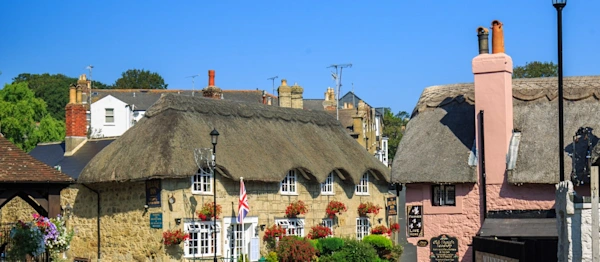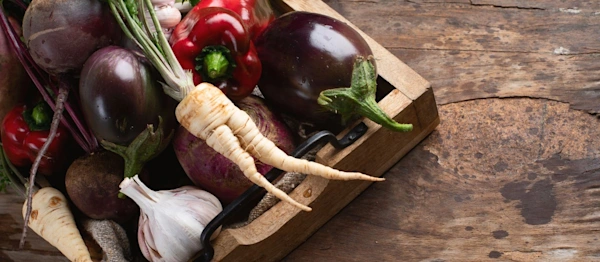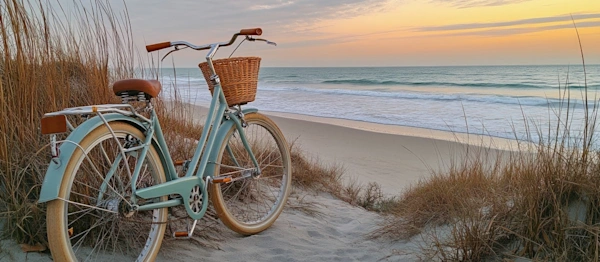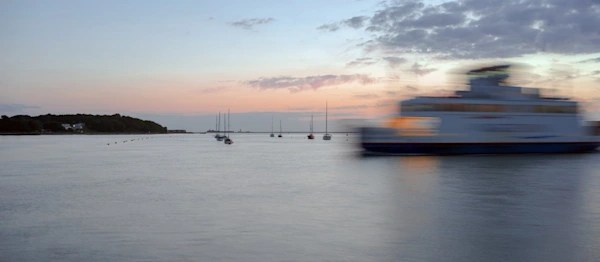Wildlife & Nature Reserves on the Isle of Wight: Where to Spot Local Wildlife
Posted on 07-04-25By: Claire S. | 8 minute read

The Isle of Wight is a paradise for wildlife lovers, offering an impressive array of habitats—from ancient woodlands and chalk downs to wetlands, coastal cliffs, and salt marshes. This diversity makes the island one of the UK’s top destinations for spotting native flora and fauna in their natural environment. Whether you're a seasoned birder, an amateur naturalist, or simply enjoy peaceful walks surrounded by nature, the Isle of Wight has something to offer year-round.
As a designated UNESCO Biosphere Reserve, the island is recognised for its unique approach to conservation—carefully balancing human presence with the protection of its rich ecosystems. This commitment ensures that wildlife continues to thrive, while you enjoy the beauty and biodiversity responsibly.
In this guide, we’ll explore the Isle of Wight’s best nature reserves and wildlife hotspots, offering tips on where to go, what to look out for, and how to make the most of your time in this remarkable natural haven.

Iconic Species of the Isle of Wight
The Isle of Wight is home to a remarkable variety of wildlife, with several iconic species that make it a standout destination for nature enthusiasts. One of the island’s most celebrated residents is the red squirrel. Unlike much of mainland Britain, the Isle of Wight remains free of grey squirrels, allowing the native red population to thrive. You’ll have the best chance of spotting these shy creatures in quiet woodlands like Borthwood Copse or Parkhurst Forest, particularly during early morning or late afternoon in spring and autumn when they’re most active.
The island also boasts impressive birdlife. Of special note are the white-tailed eagles, reintroduced in recent years as part of a conservation project. These majestic birds, with their massive wingspans, can sometimes be seen soaring over the coast. Other avian highlights include seasonal visitors such as gannets, shearwaters, and a wide range of waders and seabirds, especially around the Bembridge and Newtown estuaries.
Along the island’s coastline, patient observers may be rewarded with sightings of marine mammals. Common and grey seals often bask on quiet shores or bob in the surf, while bottlenose dolphins occasionally make appearances during the warmer months, thrilling lucky onlookers with their playful displays.

Top Nature Reserves and Wildlife Spots
Alverstone Mead Nature Reserve
Tucked away near Sandown, Alverstone Mead Nature Reserve offers a tranquil escape into one of the Isle of Wight’s richest natural habitats. This peaceful reserve is a haven for both wildlife and nature lovers, featuring a beautiful mix of woodland and wetland environments that support a wide range of species.
A highlight of Alverstone Mead is its healthy population of red squirrels, often seen darting through the treetops or foraging near the well-maintained paths. The reserve also attracts a variety of woodland birds, including nuthatches, great spotted woodpeckers, and warblers, as well as wetland species such as ducks, herons, and dragonflies around the stream and marshy areas.
For the best wildlife experience, head to the dedicated wildlife hide, which overlooks the wetland and provides fantastic views without disturbing the animals. The best times for sightings are during early mornings or late afternoons, when the reserve is quieter and wildlife is most active. A flat, accessible boardwalk makes it easy to explore, and the serene setting makes it a perfect spot for a slow-paced, immersive nature walk. Whether you're a seasoned birdwatcher or just seeking a peaceful moment in nature, Alverstone Mead is well worth a visit.
Brading Marshes RSPB Reserve
Located between Brading and Bembridge Harbour, Brading Marshes RSPB Reserve is the Isle of Wight’s only Royal Society for the Protection of Birds (RSPB) site, and one of the island’s most important wetlands. Spanning a vast area of reed beds, marshes, and freshwater ditches, this reserve is a magnet for birdlife and a top destination for wildlife enthusiasts.
The reserve provides a home to a diverse array of species, including soaring buzzards, graceful little egrets, and the vibrant green woodpecker, often heard before it’s seen. In recent years, marsh harriers have become a regular sight, gliding low over the reeds in search of prey. You might also spot red squirrels along the fringes of the woodland areas, making this a great spot for multi-species sightings.
Binoculars are a must when visiting Brading Marshes, as many birds can be observed from a distance without disturbing their habitats. The site is accessible year-round, with several walking trails offering varied views of the reserve, from open wetland vistas to sheltered observation points. Whether you're interested in spotting rare birds or enjoying the peaceful atmosphere of the marshes, Brading Marshes is a fantastic location to connect with the island’s natural beauty.
Newtown National Nature Reserve
Nestled along the northwest coast of the Isle of Wight, Newtown National Nature Reserve is a captivating destination for wildlife enthusiasts and nature lovers alike. This expansive reserve offers a rich blend of meadows, ancient woodlands, salt marshes, and estuaries, providing diverse habitats that support a wealth of wildlife.
A key feature of Newtown is its seasonal birdlife. The reserve is a prime spot for wintering wildfowl and waders, including species like brent geese, redshanks, and lapwings. The salt marshes and estuarine areas attract a variety of migratory birds, making it an excellent location for birdwatching throughout the year. The reserve’s hay meadows also support an impressive range of flora, with wildflowers in full bloom during the warmer months, adding vibrant colour to the landscape.
Explore the reserve via several walking trails, which meander through different habitats, offering you the chance to spot a variety of species and enjoy the tranquillity of the natural surroundings. For a deeper understanding of the area’s history, a visit to the Old Town Hall in Newtown offers a fascinating look into the reserve's cultural and natural heritage. Whether you’re a birdwatcher, botanist, or just seeking a peaceful walk, Newtown is a must-see destination.
Parkhurst Forest
Located just northwest of Newport, Parkhurst Forest is one of the Isle of Wight’s most accessible woodlands, offering a peaceful retreat into mixed woodland that is home to a wide variety of wildlife. The forest is particularly famous for its population of red squirrels, which are often seen bounding through the trees or foraging for food in the undergrowth. The forest’s diverse tree species, including oak, beech, and pine, provide excellent cover and a rich food source for these iconic creatures.
Birdwatchers will also enjoy the variety of species that call Parkhurst Forest home, including woodpeckers, nuthatches, and finches. To maximise your chances of spotting red squirrels, visit during the early morning or late afternoon, when they are most active. For the best views, make use of the dedicated viewing hide, which offers an unobtrusive way to observe wildlife without disturbing it. With its calm atmosphere and diverse wildlife, Parkhurst Forest is a great spot for nature lovers seeking a quiet, immersive experience.
Mottistone Gardens and Estate
Located near Brighstone, Mottistone Gardens and Estate offers a beautiful blend of gardens, woodlands, and downlands, making it an ideal spot for nature lovers to explore. The gardens are meticulously designed, featuring a variety of plants that thrive in the island's unique climate. Surrounding the gardens, the estate’s woodlands and downland areas are rich with wildlife, providing a haven for various species.
The estate is home to a variety of bird species, including songbirds and woodland birds, as well as a healthy population of red squirrels. The meadows and gardens also attract butterflies, making it a perfect spot for wildlife photography. Wander through the gardens, enjoying the stunning floral displays, or venture into the surrounding woodlands and downlands for a more immersive nature experience. Check for guided walks and seasonal events, which offer an opportunity to learn about the estate's history and its rich biodiversity. Mottistone Gardens is a peaceful destination where both horticultural beauty and wildlife flourish.
Ventnor Botanic Garden
Nestled in the coastal town of Ventnor, Ventnor Botanic Garden is a unique gem, boasting a subtropical garden that thrives due to the island's distinctive microclimate. The garden’s diverse plant collections feature a rich array of exotic species, many of which are rarely found in other parts of the UK. These plants attract a range of butterflies and bees, adding to the garden's allure as a wildlife hotspot.
The garden is also home to the occasional sighting of wall lizards, which enjoy the warmth of the sun-soaked paths. For visitors interested in learning more about the garden’s rare and tropical plant species, guided tours are available, offering insights into the unique environment that allows these plants to flourish. The garden’s serene atmosphere and diverse ecosystems make it a fantastic place to relax and observe nature up close. Whether you're a plant enthusiast or simply looking for a peaceful escape, Ventnor Botanic Garden is a must-see destination on the Isle of Wight.

Seasonal Wildlife Watching Opportunities
The Isle of Wight offers incredible wildlife watching opportunities throughout the year, with each season bringing its own unique highlights.
Spring
Is a time of renewal, as migratory birds begin to return to the island. Look out for species like swallows, sand martins, and chiffchaffs as they settle in the island’s woodlands and wetlands. Wildflowers, such as bluebells and primroses, also begin to bloom, attracting pollinators and brightening up the landscape.
Summer
The island becomes a haven for butterflies and dragonflies, particularly in meadows and along the coastal paths. Birds are busy nesting, and you may spot terns, swans, and other seabirds tending to their young.
Autumn
Marks a dramatic shift as migratory birds pass through, including waders and wildfowl, making it an excellent time for birdwatching. It’s also the start of deer rutting season, where the sound of stags bellowing can be heard in the forests.
Winter
The island is home to overwintering wildfowl, such as brent geese and wigeons. The colder months offer clear views of resident mammals like red squirrels and seals, as they are often more visible during quieter, frosty days.

Looking for more Isle of Wight Inspiration?
The Isle of Wight boasts a rich biodiversity, with diverse habitats and accessible nature reserves offering year-round wildlife watching opportunities. Come and explore these stunning natural spaces, deepening your appreciation for the island's wildlife while supporting the important conservation efforts that help preserve these remarkable ecosystems.
If you're wanting more inspiration whilst you are on the Isle then head over to read our comprehensive Isle of Wight travel guides.
About Us
cottages.com is your go-to destination for an extensive selection of memorable cottage holidays. With a wealth of experience spanning over 45 years, we boast a portfolio of over 20,000 holiday homes spread across the UK, catering to every budget. We're committed to maintaining a high standard of service to our customers by abiding by ABTA's Code of Conduct Our excellent Trustpilot rating reflects the high level of customer satisfaction we strive for. We believe in keeping things simple, so you can focus on making lasting memories with your loved ones from the moment you book with us.
Sign up for a chance to win £500!
Stay updated on the latest deals, exclusive offers and new holiday destinations by joining the cottages.com newsletter! Register today and automatically be entered into our prize draw to win a £500 voucher. Click here for terms and conditions.
You can opt out anytime by using the unsubscribe link in our emails. We will use your information as per our Privacy Notice.











